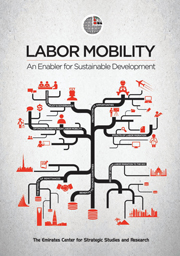Book contents
- Frontmatter
- Contents
- Figures and Tables
- Abbreviations and Acronyms
- Foreword
- Introduction
- 1 The Development Impacts of Temporary Migration and the Protection vs. Opportunities Trade-off
- 2 The Economic Development Benefits of Human Mobility to Source Countries
- 3 The Effects of Remittances
- 4 Recessions and Remittances in Home and Host Countries: An Overview
- 5 Seize the Spotlight: A Case for GCC Engagement in Research on the Effects of Labor Migration
- 6 Migration Policy and Governance in the GCC: A Regional Perspective
- 7 Optimizing benefits from Labor Mobility: The Case for Research Collaboration between Bangladesh and the GCC
- 8 Drivers of Development: The Impact of Indian Labor Migration to the GCC
- Contributors
- Notes
- Bibliography
- Index
3 - The Effects of Remittances
Published online by Cambridge University Press: 05 September 2014
- Frontmatter
- Contents
- Figures and Tables
- Abbreviations and Acronyms
- Foreword
- Introduction
- 1 The Development Impacts of Temporary Migration and the Protection vs. Opportunities Trade-off
- 2 The Economic Development Benefits of Human Mobility to Source Countries
- 3 The Effects of Remittances
- 4 Recessions and Remittances in Home and Host Countries: An Overview
- 5 Seize the Spotlight: A Case for GCC Engagement in Research on the Effects of Labor Migration
- 6 Migration Policy and Governance in the GCC: A Regional Perspective
- 7 Optimizing benefits from Labor Mobility: The Case for Research Collaboration between Bangladesh and the GCC
- 8 Drivers of Development: The Impact of Indian Labor Migration to the GCC
- Contributors
- Notes
- Bibliography
- Index
Summary
The past several decades have brought significant changes to aviation and communication thanks to tremendous advances in technology. Both have helped people move. Aviation has helped people reach new destinations at a faster rate and with less hassle, allowing greater mobility. Better communications have opened new opportunities for workers who are now not just aware of openings outside their immediate reach, but also have the chance to be considered for these jobs. Empirical evidence suggests that migrant stock almost doubled between 1960 and 2000, reaching 165 million. The International Organization for Migration (IOM) estimates the current number of international migrants to be around 214 million, or what would be the fifth most populous country in the world. With such large numbers, one would expect important consequences, and one direct consequence of migration is the amount of money migrants send back home. The latest remittance inflow estimates have surpassed US $500 billion.
Figure 3.1 highlights total world remittance inflows between 1970 and 2012, showing a consistent and continuous increase in nominal remittances, with a slight dip during the 2008 financial crisis.
While remittance flows are large and have increased over time, their further importance is derived from their size relative to aid flows. Figure 3.2 compares remittance inflows to net official development assistance and aid to low- and middle-income countries over a period of 40 years (1971–2011). The figure shows that for several low- and middle-income countries, remittance flows are larger than official aid.
- Type
- Chapter
- Information
- Labor MobilityAn Enabler for Sustainable Development, pp. 69 - 86Publisher: Emirates Center for Strategic Studies and ResearchPrint publication year: 2013



